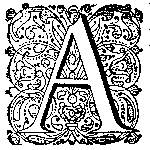The Kite of State. The Political Iconography of Kiting in the Dutch Republic 1600-1800
DOI:
https://doi.org/10.18352/emlc.25Keywords:
history of kiting, visual culture, Dutch Republic, political imagery, iconography, global exchangeAbstract
This article analyses the iconography of kiting in the Dutch Republic and the role kites played in the conceptualization of political order and conflict. We argue that the introduction of the kite in Europe around 1600 provided authors and artists with a new, multi-layered and dynamic symbol, to help understand and imagine the new political reality of the Dutch Republic. Although the kite in Europe was mainly perceived as a children’s game, leaving behind its more adult and sometimes violent Asian background, it acquired a serious and powerful set of meanings in texts and images. In competition with the traditional iconography of bubbles, Icarus, the Ship of State and the Body Politic, the kite provided new opportunities for cultural imagery. It facilitated the analysis and visualisation of complex phenomena such as the state system of the Dutch Republic, the interplay between Stadtholder and Land’s Advocate, the ambition of statesmen, and the international balance of power. The kite, a new technological device, helped to narrate the story of a proud Republic, based on technological accomplishments and moral superiority, and admired by other nations for its high flight.
Downloads

Published
Issue
Section
License
Copyright (c) 2017 Gert-Jan Johannes, Inger Leemans

This work is licensed under a Creative Commons Attribution-NonCommercial 4.0 International License.





